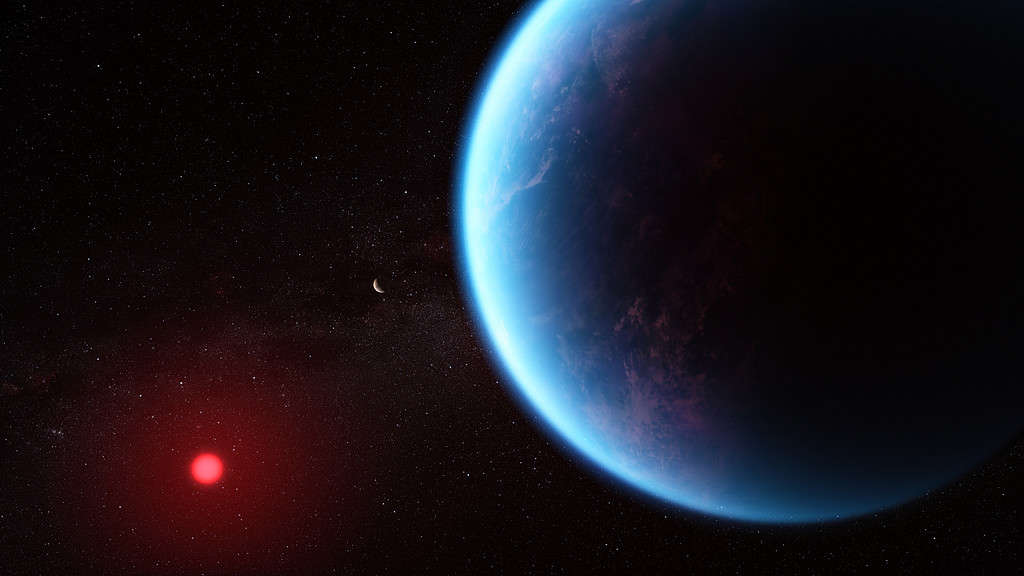
Our solar system hosts two types of planets. There are rocky planets, like Mercury, Earth or Mars, and the gas giants like Neptune, Jupiter, or Uranus. But there are other types of planets in our universe that don’t exist in our solar system — and one particularly interesting type of planet is the water world.
It’s hard to even imagine what a water world would be like. We’re not even 100% certain they exist, although several studies have found tantalizing hints at their existence. If they do exist, such planets (also called Hycean worlds) are bigger than the Earth. They’re sometimes called mini-Neptunes, in fact, because they would be closer to Neptune’s size than ours. But other than that, we don’t really know much about them.
Cambridge astronomer Nikku Madhusudhan got a close look at one possible Hycean world called K2-18b using the James Webb Space Telescope in 2023. But even so, he couldn’t really figure out all that much about what the inside of these planets would be like. So, he turned to modelling. Specifically, they created several models to map out possible planetary structures.
Earth and water
Perhaps the most intriguing aspect about these planets is whether they can host life. They have a lot of water, so there’s that going in their favor. But they’re so different from Earth that water alone may not be enough.
Madhusudan and co-author Frances Rigby only looked at conditions that allow for habitable temperatures and pressures at the ocean’s surface, where the water meets the air. With these constraints, they modelled what the oceans and internal structure of these planets would be like — and found a number of different possibilities.
For starters, the ocean thickness of these planets could vary dramatically, from an average of 10-20 km deep to a whopping 1000 km deep. For comparison, the Earth’s average ocean depth is 3.7 km. This might be a big problem as the pressure at those depths could be completely unsuitable for life.
Another problem is the probable existence of ice. Even if the temperature is just right to host liquid water at the surface, the water gets colder and colder as you go down. At some point, it may develop a layer of ice between the liquid water and the planet’s crust. Here on Earth, the weathering of rocks on the seafloor produces important nutrients. The existence of an ice layer might seal away these nutrients and render them unavailable for potential life forms.
However, if the conditions are right, the nutrients could escape the ice through convection, the researchers note.
Looking at water world suspects
The models give a lot of information regarding the potential structure of these planets, but we need to confirm it with practical observations. For now, researchers have their sights set on three specific potential water worlds: TOI-270 d, TOI 1468 c, and TOI-732 c (TOI refers to planets observed by the TESS space telescope).
All three candidates orbit around red dwarf stars — stars that are not as hot as the Sun but sometimes have violent flares. Nevertheless, these particular stars around which these planets revolve are relatively calm. This makes them pretty promising candidates to be habitable planets — that is, of course, if we can confirm that they are actually water worlds.
However, the research underscores the potential habitability of these planets under a wide range of conditions, challenging the traditional scope of habitable zones. Rigby and Madhusudhan’s study also highlights the potential of upcoming observations, particularly from the James Webb Space Telescope (JWST), to further constrain the characteristics of Hycean worlds. They emphasize that the unique atmospheric signatures and interior compositions of these planets make them prime targets for the search for biosignatures outside our solar system. By analyzing the internal structures and atmospheric compositions of five candidate Hycean worlds, the study places constraints on their habitability and opens new avenues for understanding planet formation and the conditions conducive to life.
Our search for extraterrestrial life just got a bit more interesting — and there are a lot of promising places to look for in the Universe.









